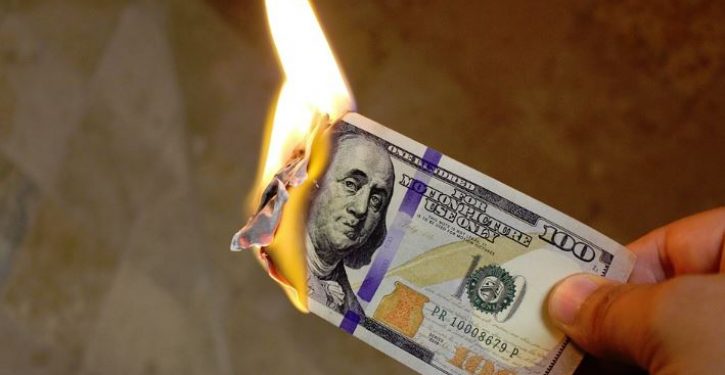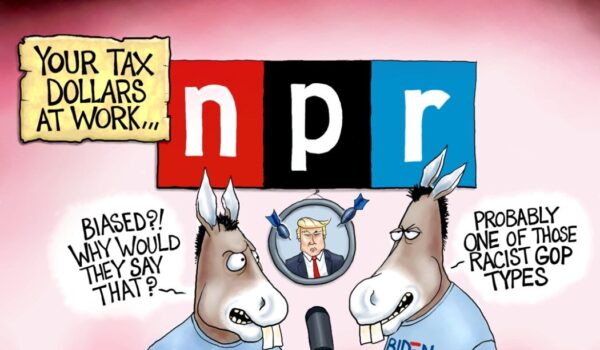
By Juan Londoño
The Biden administration announced Monday that it would introduce a new wave of student loan cancellation through the SAVE program covering a wide range of debtors. To date, the administration’s debt forgiveness has risen to a staggering total of $146 billion. Perhaps unsurprisingly, the Biden administration has accelerated their loan-canceling agenda to boost its dwindling support amongst a key voting demographic ahead of this year’s election. While it is known that student loan cancellation is bad economic policy, the SAVE program is a particularly aggravating one, as it will cost more than expected, be less targeted and will incentive students to take more debt and colleges to raise tuition faster.
The new forgiveness package would automatically forgive debt for those eligible under SAVE, an income-driven repayment plan, even when not actively enrolled in the program — under SAVE criteria, those who borrowed less than $12,000 and have been paying their loans for at least ten years. Debtors who borrowed more than $12,000 become eligible for this benefit after every additional year of payments for each extra $1,000 borrowed. For example, those who borrowed $14,000 would be required to have paid for two extra years, for a total of 12 years. After 25 years of payments have passed, all debtors under SAVE automatically get their loans forgiven, regardless of how much money was borrowed.
At face value, the package’s provision might seem like a sensible approach. It automatically forgives debt for potentially eligible borrowers without them having to navigate complex paperwork. It also targets borrowers with seemingly low balances that have taken a decade or more to pay their loans, a signal that these borrowers likely had a very low income that would make them incapable to pay off a seemingly attainable loan for a highly educated individual. However, as the administration aims to make SAVE permanent, it could have various adverse effects for both students and taxpayers.
Guaranteeing forgiveness to low-balance borrowers increasingly incentivizes students to finance their degrees through borrowing instead of other methods, adds fuel to the fire of the student loan crisis, the deficit and national debt. With this benefit, it makes more sense for low-tuition students (such as community college students) to take one of these income-based repayment loans and defer payment as much as possible to cross the ten-year threshold and get their loan forgiven. By doing this, students could get their degree subsidized by up to 90 percent of their tuition costs. With this program, it becomes financially beneficial to take loans that might not be taken otherwise.
The economic case for SAVE’s income-driven repayment program becomes even weaker when applied to debtors with higher balances. As highlighted by a report from the Foundation for Research on Economic Opportunity, the current structure of SAVE would offer prospective students significant subsidies if they decide to finance their degrees through debt, with up to 70 percent of undergraduate borrowers potentially getting their loans forgiven after 20 years under this scheme.
However, as these subsidies are conditioned to post-graduation income, borrowers could face a “threshold effect,” where finding a high-paying job that could leave a student worse off. For example, if a salary increases a debtors’ discretionary income — defined by SAVE as any income over 225 percent of the poverty line — but does not offset the increased cost of loan payments, the borrower will likely forgo that high-paying job to stay in a lower-paying job that maintains their benefits. Ultimately, a program that is supposed to work as a tool for upward mobility ends up incentivizing students to acquire more debt while imposing a practical cap to their post-school earnings.
The economic pitfalls of the program do not end there. As the Congressional Budget Office (CBO) has highlighted, income-driven loan repayment disproportionally benefits graduate students. CBO estimates that graduate students will hold 50 percent of the volume of loans from 2020 to 2029. However, graduate student loans account for nearly 81 percent of loan forgiveness expenditures.
Educational financial aid programs are often touted as a tool to increase wage growth, productivity and social mobility. Instead, SAVE incentivizes students to obtain expensive graduate degrees but to remain underemployed so that they can obtain these costly degrees at the lowest out-of-pocket cost possible.
This scheme comes at an increasingly higher cost to the taxpayer. As highlighted above, the Biden administration has forgiven up to $146 billion in student loans. That number does not even include the nearly $5 billion per month from the payment pause benefits that started under the Trump administration and were extended until late 2023.
Taxpayers should not be left footing the bill of programs that fail to achieve their economic objectives and leave millions of students behind.
Juan Londoño is a senior policy analyst at the Taxpayers Protection Alliance.


